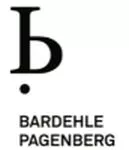On March 12, 2025, the European General Court (Second Chamber) delivered a significant judgment in Case T-66/24 between Lidl Vertriebs GmbH & Co. KG ("Lidl") and EUIPO/Liquidleds Lighting Corp. The decision provides important clarification on the application of the grace period in design law, particularly regarding the relationship between initially disclosed and subsequently registered designs.
Key takeaways (for design owners)
- The grace period allows for design modifications during the 12-month period
- Identity between the disclosed and registered design is not required
- Designs can be optimized based on market testing while maintaining protection
- Changes are permitted as long as they produce the same overall impression
- Market testing and subsequent modifications are explicitly recognized as legitimate practices
I. Background of the case
The case concerned a registered Community design for an LED light bulb (RCD no. 003619881-0001), represented in the following view:

Image source: Judgment of the General Court
Lidl challenged the design for lack of novelty and individual character. The Applicant (Lidl) presented three main arguments, each addressing different aspects of the grace period's application under Article 7(2) of Regulation No. 6/2002. The central issue was whether modifications made to the design during the grace period would affect the protection afforded by this provision.
II. Analysis of the three main arguments
1. Burden of proof
Lidl argued that the burden of proving the applicability of the grace period exception lies with the party invoking it. The Court clarified, however, that while the initial burden indeed lies with the party claiming grace period protection, the invalidity applicant may file observations but does not bear the burden of disproving the conditions of Article 7(2) CDR. The Court found that the Board had correctly:
- first examined whether the design holder had established the conditions for applying the grace period
- then considered the Applicant's counter-arguments, and
- maintained the proper distribution of the burden of proof
throughout the proceedings.
2. Assessment of evidence
The Applicant challenged the Board's evaluation of the evidence, pointing to alleged inconsistencies between various versions of the light bulb design. The Court emphasized that the evidence assessment should focus on the context of disclosure rather than design identity. The Court hence found that minor variations between designs did not undermine the validity of the evidence, particularly when these variations did not affect the overall impression of the design.
3. Interpretation of Article 7(2)
The most significant aspect concerned the interpretation of the grace period provision itself. The Court provided a detailed textual analysis, noting that Article 7(2) CDR deliberately does not use terms like "identical" or "same design," unlike other provisions such as Article 41(1) CDR where the legislator explicitly required identity. This deliberate choice of language supports a more flexible interpretation. The Court noted and emphasized several key reasons for rejecting a strict identity requirement:
- The regulation's objective of promoting innovation
- The practical need for market testing
- The necessity of allowing design optimization based on market feedback
- The recognition that requiring absolute identity would undermine the grace period's purpose
III. Legal framework and future impact
The Court's interpretation aligns perfectly with the upcoming new "EU Design" Regulation 2024/2822, which explicitly addresses self-disclosure of earlier designs that are "identical or do not differ in their overall impression." This alignment creates a coherent legal framework that will continue to be relevant under the new regulation.
The decision also provides practical guidance for assessing the
relationship between disclosed and registered designs. Rather than
requiring strict identity, the protection extends to designs that
produce the same overall impression as the initially disclosed
version, acknowledging the reality of iterative product
development.
IV. Conclusion
The Court's comprehensive analysis marks a significant evolution in design law. By systematically addressing the burden of proof, evidence assessment, and textual interpretation of the grace period provision, the Court has created a clear and practical framework that serves both legal certainty and business reality.
The judgment's approach demonstrates a deep understanding of modern product development challenges. By rejecting the requirement for absolute identity while maintaining the "same overall impression" standard, the Court has struck a careful balance between protection and flexibility.
This pragmatic approach ensures that the design protection system serves its intended purpose of fostering innovation while protecting legitimate business interests. Design owners can now more confidently utilize the grace period as part of their product development strategy, knowing that reasonable modifications will not compromise their rights, provided they maintain proper documentation and respect the overall impression requirement.
The decision sets an important precedent that harmonizes procedural requirements with practical business needs, making the design protection system more responsive to real-world product development processes while maintaining its fundamental protective function.
The content of this article is intended to provide a general guide to the subject matter. Specialist advice should be sought about your specific circumstances.


